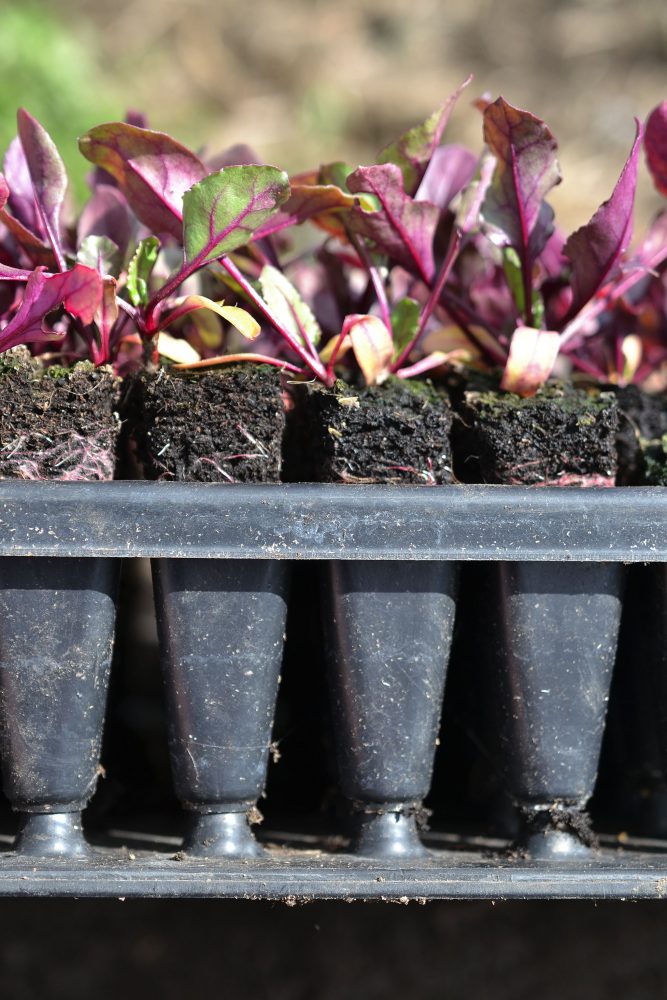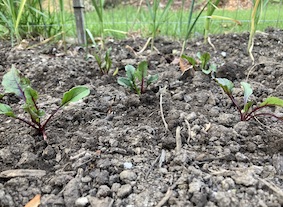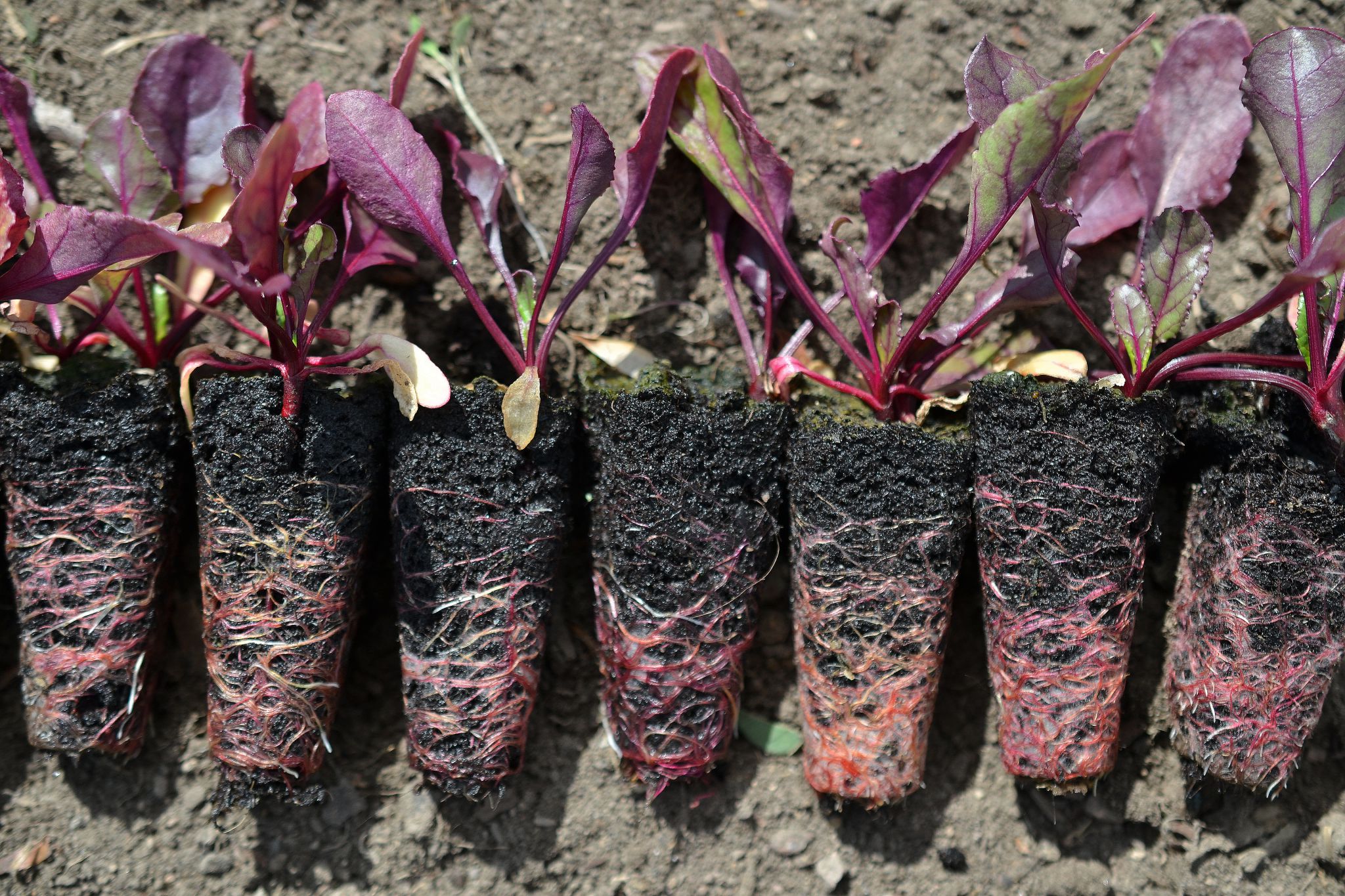

- #Beet seedlings ready for transplant how to
- #Beet seedlings ready for transplant skin
- #Beet seedlings ready for transplant trial
Dig potatoes immediately after frost kills the vines and cure roots for five days at 85 F (29.4 C) and high relative humidity.Īfter this treatment, store potatoes at 60 F (15.6 C) and 85 percent relative humidity. As the sprouts arise, add more sand to encourage deeper rooting.ĭetach these shoots from the root and transplant into the garden. Bury a sweet potato root in a pot or deep pan of moist sand six weeks before the last frost date.
#Beet seedlings ready for transplant trial
Sweet potatoes may be grown in warmer areas on a trial basis. Recommended varieties are Brazilian White and Brazilian Red.

They store best in the soil but will keep well in a root cellar if packed in moist sawdust.
#Beet seedlings ready for transplant skin
The tubers have a thin skin and shrivel readily in a dry atmosphere. Whole tubers are planted in the spring and the crop is dug before the ground freezes. Jerusalem artichokes do well in poor soil and may become a weed. Recommended varieties are Maliner Kren and Improved Bohemian. The main roots, after side roots are removed, are stored for eating. Side roots then are removed, with the larger ones stored for planting in the spring. The roots are dug before the ground freezes. Horseradish rootlets are purchased and planted vertically with the tops just below the surface. Recommended varieties are Giant Prague, Marble Ball and Early Paris. The seed is quite small and requires a finely prepared seedbed, shallow planting and very careful moisture control until seedlings emerge. Its primary use is as a flavoring in soup, although it can be eaten like any other root crop. It is more common in Europe than in America. CeleriacĬeleriac is a type of celery that develops a turniplike root. Plant them in August and harvest the following July.

You also may use varieties such as Buffalo, Keep Well, Top Keeper and Walla Walla Sweet for overwinter production.

Varieties recommended are: (Yellow) Rocket, Simcoe, Yula, Golden Cascade (Red) Bennie's Red, Carmen Tango, Italian Red Torpedo (White) Blanco Duro, White Delight. Yellow onions keep best, followed by red and white ones. Red, white or the standard yellow varieties are available. Choice of varieties is very limited when you use transplants or sets. Onions may be grown from seed, transplants or sets. Carrots grow best in loose, well-drained soil or raised beds. Few other vegetables can match home-grown carrots for vitamin content and sweet flavor. Yellow beets haven’t produced as well as the red beets listed here, but you might try Burpee Golden. Recommended varieties include Early Wonder, Detroit Dark Red, Red Ace, Cylindera, Little Ball, Sweetheart and Ruby Queen. Beet juice is a basic ingredient of Russian borscht. The tops may be cooked or served fresh as greens roots may be pickled for salads or cooked whole, sliced or diced. The oblate to globe-shaped, red-rooted types are most popular in the home garden.īeet tops are a good source of vitamin A, and the roots are a good source of vitamin C. Most of these crops are frost-hardy and will continue to grow if an early frost is followed by warm weather Beetsīeets may be red, white or yellow and may vary in shape from oblate to long and cylindrical. Parsnips, rutabagas and turnips, like these other root crops, are easy to grow, especially in raised beds with wide rows. Today, beets, carrots, radishes and onions (a bulb crop) are the most widely grown crops in gardens.
#Beet seedlings ready for transplant how to
They played an important role in early civilization of Mediterranean Europe, Africa, and Asia long before our ancestors learned how to grow their own food. These crops are also ideal because they take up little space and can be harvested over a long period of time. They are among the first and last vegetables to be harvested and with proper home storage facilities, you’ll have a fresh supply all winter and into spring. Root crops have a place in every vegetable garden.


 0 kommentar(er)
0 kommentar(er)
